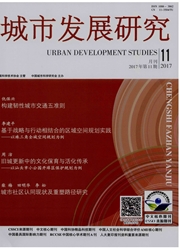

 中文摘要:
中文摘要:
避难路径,不仅是一个疏散通道的空间布局问题,还涉及人的选择问题。在地震发生的紧急时刻,避难路径的选择,对于民众的避难效率和效果有着很大影响。通过行为地图的调查方法来收集数据,分析老旧住区内居民选择的避难路径的空间特征。提出了四个主要考核指标,即距离、绕曲指数、集中度、连续性,详细分析了各指标的分布情况,并阐述了其背后的影响要素。
 英文摘要:
英文摘要:
Evacuation route, is not only an evacuation passageway space layout, but also a problem of selection for human. In times of emergency earthquake, evacuation route choice, has a great impact on people's evacuation efficiency and effectiveness. The data are collected by survey method behavior map, to analysis spatial characteristics of residents' evacuation route choice in the old residential. The four major indicators are proposed, like the distance, bending index, concentration, continuity. The distribution of each index was analyzed in detail, and effects of factors behind this were illustrated.
 同期刊论文项目
同期刊论文项目
 同项目期刊论文
同项目期刊论文
 期刊信息
期刊信息
